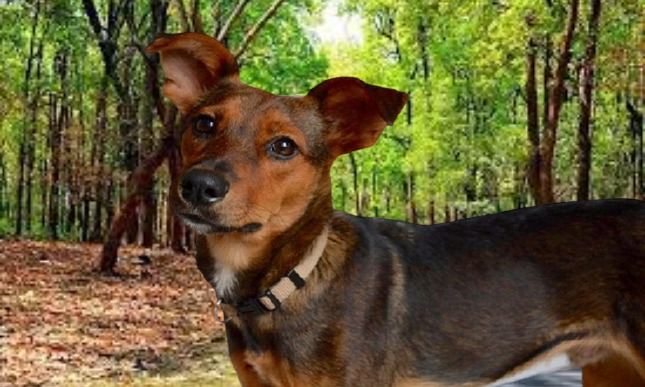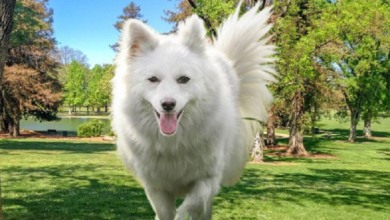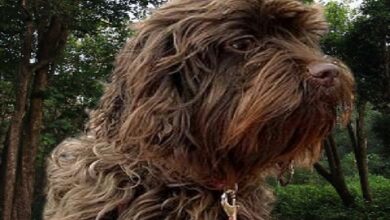Potcake Dog Info: Price, Lifespan, Characteristics & Temperament
Find out all you need to know about Potcake Price, Appearance, Traits, Facts, Images and Many More!

Potcake Dog Breed Overview
Potcake dog breeds are a distinct breed that is found within the islands of Barbados. They’re also referred to as Bajan dog, Bajan puppies, or simply potcakes. Despite their innocent names the dogs have a dark background. Potcake dogs were initially breed for food on the island and consumed by slaves as well as plantation owners too. Their gentle nature and lack devoid of hunter instincts rendered them a popular to target for cooks seeking an inexpensive meal. Although they had been discarded as food, they faced the challenge of survival since they did not have the natural abilities to survive on their own. Potcakes today are considered as one of Barbados’s national symbols and symbolize positivity and luck. But, it’s proved difficult keeping this sweet dog alive because of its low birth rate and its high susceptibility to diseases.
Potcake Dog Breed Profile At a Glance
| Dog Breed Name | Potcake |
| Other Names | Turks & Caicos Potcake, St Lucia Mongrel, Grenada Pothound |
| Size | 24 inches |
| Average Height | Approx. 24 inches (61 cm) |
| Average Weight | 30–70 pounds (14–32 kg) |
| Energy | Medium |
| Activity | Regular Exercise, A walk twice a day suffices |
| Origin | Caribbean Islands |
| Group | Domestic |
| Lifespan* | 10 – 12 years |
| Biography | The potcake dog is a mixed-breed dog found on Caribbean islands. Its name comes from the congealed peas and rice mixture that local residents traditionally eat, as the overcooked rice that cakes to the bottom of the pot would be fed to the dogs. Potcakes normally have smooth coats, cocked ears and long faces. |
| Coat | Smooth, Short coat |
| Colour | Brown, Black, White, Red, Cream, Yellow |
| Temperament | Intense Bond with Humans, Relaxed, Sensitive Disposition, Intelligent eyes |
| Potcake Dog price in India | The price of potcake dogs range from Rs. 20,000 to Rs. 30,000. |
| Pros & Cons |
Appearance
It is described as “shepherd-mix” appearance, the Potcake dog’s appearance is different for each island. It could resemble a normal pariah breed or bear mastiff, hound, spaniel or retriever traits. The breed is typically characterized by ears that are cocked and pointed and a face that is long, and a smooth coat that lacks an undercoat or, less frequently the term “shaggy” rough coat. As because of their diverse origins, potcakes can vary in color including dark brown, white and many more, with mixed coats.
Potcake Size (Male & Female)
Average size of Potcake Dog is 24 inches.
Potcake Height
Height of Potcake dogs can be anywhere from 18-24 inches (46.5-61 cm).
Potcake Weight
Weight of Potcake dogs can be anywhere from 30–70 pounds (14–32 kg).
Potcake Color
The Color of Potcake Dog is Brown, Black, White, Red, Cream and Yellow.
Potcake Coat
Smooth, Short coat
Potcake Temperament
Potcake dogs are intelligent, loyal, calm, and resilient. They are intense bond with humans, relaxed, sensitive disposition and intelligent eyes. They need high exercise.
What are Potcake Characteristics?
Potcake dogs are smart they are loyal, peaceful, and resilient. Contrary to many breeds of dog they are able to consume a variety of foods that could be unpalatable to the majority of breeds of dogs. The appearance of Potcake dogs is different depending on the Islands they reside on. They are reminiscent of dogs like German mastiffs, shepherds, dogs, terriers, and Pariah in various combinations.
|
Characteristics of the Potcake |
|
| Affection Level | High |
| Friendliness | High |
| Kid-Friendly | High |
| Aggression | Medium |
| Exercise Needs | High |
| Playfulness | High |
| Energy Level | Medium |
| Trainability | High |
| Intelligence | High |
| Amount of Shedding | Medium |
Potcake Life Expectancy
Potcake Life Expectancy is between 10 and 12 years, which is a lot longer than their predecessors. They are still at a greater likelihood of developing diabetes as well as other ailments.
Potcake Dog Price
Potcake puppy price would range from $300 -$500 (Estimated).
Interesting Facts about Potcake
- Potcake are gentle and they can be captured in a single touch.
- They were used previously to feed plantation workers.
- The term “Potcake” is derived from the deliciously fried cakes made of ground cornmeal and flour and flour, which is the food the dogs were fed.
- Potcake dogs are typically between 15 and 30 pounds.
- They are available in a range of shades including white, black, brown, tan and red.
- They have intense Bond with Humans.
- They do regular exercise, A walk twice a day suffices.
- Potcake can eat a wide range of foods.
- They are smart dogs.
History
The Potcake dog breed is a breed consisting of three dogs. Certain inhabitants from the Caribbean islands came from nearby islands, and they took their dogs along with them. Dogs transported from Arawak in the Bahamas as well as terriers carried through ships to Eleuthera and Abaco Islands as well as the dog taken to the islands from North Carolina during the American conflict in the beginning of the evolution of the Potcake dog breed.
Most Frequent Asked Questions about Potcake
Q1. Do Potcakes need special care?
Potcakes require regular exercise and grooming, just like any other dog. However, they tend to be more resilient than some other breeds and may not need as much care as other dogs.
Q2. Are Potcakes good with children?
Yes, Potcakes are known to be great with children. They are loyal, affectionate, and patient, making them great family companions.
Q3. How much do Potcakes usually cost?
The cost of a Potcake can range from 3 dollars to several hundred dollars for a puppy from a breeder. The cost will also depend on the specific type of Potcake you are looking for.
Q4. How do I care for a Potcake’s coat?
Potcakes have short, easy-to-maintain coats. They should be brushed regularly and bathed when necessary. It is also important to check their ears and eyes regularly for signs of infection.
Q5. Do Potcakes need a lot of exercise?
Yes, Potcakes need plenty of exercise to stay healthy and happy. Daily walks, as well as regular playtime, are essential for these active dogs.





